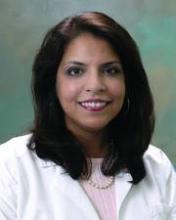The increasing number and efficacy of chemotherapy drugs for a host of cancers – coupled with growth of the older population – not only means that elderly patients have more options for treatment, but also that more of these patients, even among the older old, can be considered candidates for chemotherapy.
This marks a big shift in the way that oncologists approach cancer treatment for patients of advanced age. Until recently, palliative care was the only treatment offered, according to interviews with leaders in geriatric oncology.
"Starting in the mid-1980s, people began to talk about these issues and the need for data and information. Just talking about it began to raise the consciousness that age was not a contraindication per se," said Dr. James S. Goodwin, director of the Sealy Center on Aging at the University of Texas at Galveston.
The numbers are clear: The baby boom is about to turn into a geriatric blast for oncologists. In 2050, the number of Americans aged 65 and older is projected to be 88.5 million, more than double the 40.2 million projected today, according to the U.S. Census Bureau. In addition, total cancer incidence is projected to increase by approximately 45%, from 1.6 million this year to 2.3 million in 2030. A 67% increase in cancer incidence is anticipated for older adults (J. Clin. Oncol. 2009;27:2758-65).
With more people living longer, some say the expansion has already begun. "Oncologists are seeing these patients in everyday practice," observed Dr. Arti Hurria, director of the Cancer and Aging Research Program at City of Hope in Duarte, Calif.
But defining these patients is turning out to be a challenge for geriatric oncologists, and determining the best treatment can be even more difficult.
How Old Is Old?
It’s not clear what "geriatric" means in this context. Intuitively, most people have a mental picture but putting it into words – or finding an agreed-upon age cutoff – is a bit elusive.
"Chronologic age doesn’t equal functional age," said Dr. Hurria An individual can be quite healthy at 80 years with little comorbidity; alternatively a 50-year-old with several health conditions can be quite sick. "In our research studies, we’ve really been forced to have to think about some sort of chronologic cutoff."
Age 65 has frequently been used because historically it’s a time when people retire and become eligible for benefits in the United States, she explained. But many facets of aging appear after age 70, and using data from a study of 500 cancer patients at least 65 years of age, Dr. Hurria and her colleagues found age 73 to be a good cutoff.
"In some ways, that was very reassuring because it really added evidence to our feeling that the seventh decade of life is a time when people become more vulnerable," she said. "It also happens to be a group – age 73 or 75 and older – that has been very underrepresented in clinical trials."
That’s not to say that everyone in their mid-70s or older is feeble and in poor health. Instead, it signals the need for further evaluation of an individual’s physiologic status. "From an epidemiologic point of view, what happens in the 70s is that a lot of people start developing health problems," said Dr. Martine Extermann, who has developed an instrument for evaluation of these patients and is professor of oncology at the University of South Florida and attending physician at Moffitt Cancer Center, in Tampa.
For Dr. Goodwin, the cutoff can be even higher. "People live 10 years longer today on average than when I graduated from medical school," said Dr. Goodwin. "So whatever idea we have about what an old person is, needs to be shifted up by 10 years."
In conversations about geriatric oncology with oncologists, he tends to start at age 80. "If you say 80 and older, you can let age be the factor," he explained. "Age is a very strong predictor of health and mortality. You can’t make that go away by factoring in all of the measurements that you might make about how well they function or how fast they walk."

